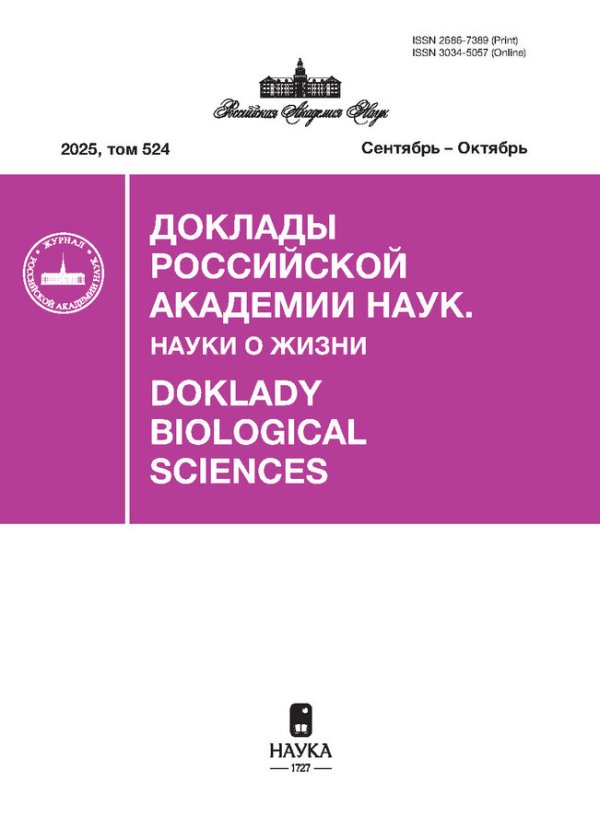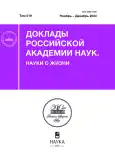Metabolic changes in the myocardium and skeletal muscles of C57Black/6 mice after non-cardiological surgery
- Authors: Kondashevskaya M.V.1, Aleksankina V.V.1, Artemyeva K.A.1, Kasabov K.A.1, Kaktursky L.V.1
-
Affiliations:
- Avtsyn Research Institute of Human Morphology Federal State Budgetary Scientific Institution “Petrovsky National Research Centre of Surgery”
- Issue: Vol 519, No 1 (2024)
- Pages: 17-23
- Section: Articles
- URL: https://journal-vniispk.ru/2686-7389/article/view/274302
- DOI: https://doi.org/10.31857/S2686738924060025
- ID: 274302
Cite item
Abstract
It has been determined that approximately 10% of patients without cardiovascular disease undergoing non-cardiac surgery (NS) suffer myocardial injury (MI) and have a 10% risk of death within 30 days after Sur. Preoperative stress (PS) increases the risk of MI after NS (MINS). The mechanisms of MINS are not well understood. The consequence of many NS is physical inactivity with the development of weakness and fatigue. To date, the relationship between NS and changes in the morphofunctional state of muscles in the postoperative period has been poorly studied. This study reveals for the first time, that metabolic and hormonal changes induced by PS+NS, as well as NS itself and inhalational anesthesia in C57BL/6 mice, are causal factors underlying the mechanisms of MINS in the postoperative period. It was also discovered for the first time, that even low values of the triglyceride-glucose index can indicate ischemic/hypoxic damage of the myocardium and skeletal muscles. Preoperative stress significantly impaired morphofunctional state of the studied organs. More research is needed on the effects of PS and NS on myocardium and muscle performance, as well as the risks and benefits of perioperative treatment.
About the authors
M. V. Kondashevskaya
Avtsyn Research Institute of Human Morphology Federal State Budgetary Scientific Institution “Petrovsky National Research Centre of Surgery”
Author for correspondence.
Email: marivladiko@mail.ru
Russian Federation, Moscow
V. V. Aleksankina
Avtsyn Research Institute of Human Morphology Federal State Budgetary Scientific Institution “Petrovsky National Research Centre of Surgery”
Email: marivladiko@mail.ru
Russian Federation, Moscow
K. A. Artemyeva
Avtsyn Research Institute of Human Morphology Federal State Budgetary Scientific Institution “Petrovsky National Research Centre of Surgery”
Email: marivladiko@mail.ru
Russian Federation, Moscow
K. A. Kasabov
Avtsyn Research Institute of Human Morphology Federal State Budgetary Scientific Institution “Petrovsky National Research Centre of Surgery”
Email: marivladiko@mail.ru
Russian Federation, Moscow
L. V. Kaktursky
Avtsyn Research Institute of Human Morphology Federal State Budgetary Scientific Institution “Petrovsky National Research Centre of Surgery”
Email: marivladiko@mail.ru
Corresponding Member of the RAS
Russian Federation, MoscowReferences
- Botto F., Alonso-Coello P., Chan M.T. et al. Myocardial injury after noncardiac surgery: a large, international, prospective cohort study establishing diagnostic criteria, characteristics, predictors, and 30-day outcomes // Anesthesiology. 2014. V. 120. № 3. P. 564-578.
- Vascular Events In Noncardiac Surgery Patients Cohort Evaluation (VISION) Study Investigators, Devereaux P.J., Chan M.T. et al. Association between postoperative troponin levels and 30-day mortality among patients undergoing noncardiac surgery [published correction appears in JAMA. 2012. V. 307. № 24. P. 2590] // JAMA. 2012. V. 307. № 21. P. 2295–2304.
- Devereaux P.J., Xavier D., Pogue J. et al. Characteristics and short-term prognosis of perioperative myocardial infarction in patients undergoing noncardiac surgery: a cohort study // Ann Intern Med. 2011. V. 154. № 8. P. 523–528.
- Cole G.D., Francis D.P. Perioperative β blockade: guidelines do not reflect the problems with the evidence from the DECREASE trials // BMJ. 2014. V. 349. P. g5210.
- Üstünel F, Tura İ, Akçam AT et al. The Effect of Preoperative Fear of Pain on Postoperative Pain Levels and the Amount of Analgesic Consumption // Pain Manag Nurs. 2023. V. 24. № 6. P. 617–621.
- Murgia M, Brocca L, Monti E., et al. Plasma proteome profiling of healthy subjects undergoing bed rest reveals unloading-dependent changes linked to muscle atrophy // J Cachexia Sarcopenia Muscle. 2023. V. 14. № 1. P. 439–451.
- Bautmans I, Van De Winkel N, Ackerman A. et al. Recovery of muscular performance after surgical stress in elderly patients // Curr Pharm Des. 2014. V. 20. № 19. P. 3215–3221.
- Simental-Mendía L.E., Rodríguez-Morán M., Guerrero-Romero F. The product of fasting glucose and triglycerides as surrogate for identifying insulin resistance in apparently healthy subjects // Metab Syndr Relat Disord. 2008. V. 6. № 4. P. 299–304.
- Lie J.T., Holley K.E., Kampa W.R. et al. New histochemical method for morphologic diagnosis of early stages of myocardial ischemia // Mayo Clin Proc. 1971. V. 46. № 5. P. 319–327.
- Серов Р.А., Чекарева Г.А., Рагузин К.К. и др. Применение окраски ГОФП – методом для выявления повреждений миокарда различного генеза // Архив патологии. 1977. Т. 34. В. 5. С. 70–72.
- Sánchez-Íñigo L., Navarro-González D., Fernández-Montero A. et al. The TyG index may predict the development of cardiovascular events // Eur J Clin Invest. 2016. V. 46. № 2. P. 189–197.
- Шиповская А.А., Ларина Н.А., Курбатова И.В. и др. Значение триглицерид-глюкозного индекса в диа гностике инсулинорезистентности при ранних формах неалкогольной жировой болезни печени // Экспериментальная и клиническая гастроэнтерология. 2021. Т. 194. № 10. С. 43–48.
- Theodossiou A., Hu L., Wang N. et al. Autofluorescence Imaging to Evaluate Cellular Metabolism // J Vis Exp. 2021. V. 177. P. 10.3791/63282.
- Georgakoudi I., Quinn K.P. Label-Free Optical Metabolic Imaging in Cells and Tissues // Annu Rev Biomed Eng. 2023. V. 25. P. 413–443.
- Kondashevskaya M.V., Mikhaleva L.M., Artem’yeva K.A. et al. Unveiling the Link: Exploring Mitochondrial Dysfunction as a Probable Mechanism of Hepatic Damage in Post-Traumatic Stress Syndrome // Int. J. Mol. Sci. 2023. V. 24. № 13012. Р. 2–26.
Supplementary files










